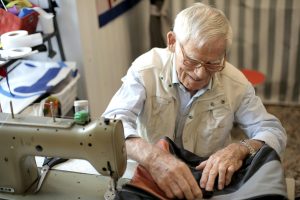3D Printing Is Revolutionizing Car Parts Production
The automotive industry has been constantly evolving, and the latest addition to its technological advancements is 3D printing. This revolutionary technology has already made its mark in multiple industries, and now it’s turning heads in the production of car parts. With its game-changing capabilities, 3D printing is set to revolutionize car parts production. In this article, we will explore how exactly this innovative technology is changing the game for the automotive industry and what it means for the future of car manufacturing.
The Traditional Process of Car Parts Production
Traditionally, car parts production involved a lengthy and costly process. It started with the design phase, where engineers would create prototypes using traditional manufacturing methods like milling and molding. This process would take weeks, or even months, before the finalized design could be tested and approved. Once the design was finalized, it would then move onto the production phase, where molds and tools would be created, and the parts would be produced through injection molding or casting.
As you can imagine, this process was not only time-consuming but also expensive. Any changes or modifications to the design would require a new mold or tool, further adding to the cost and time. And with the constantly changing demands of the automotive industry, this traditional method of production was proving to be highly inefficient and not sustainable in the long run.
The Rise of 3D Printing in Car Parts Production
3D printing, also known as additive manufacturing, offers a completely different approach to production. Instead of starting with a physical object and carving away at it, 3D printing starts with a digital design and adds layers upon layers of material until the final product is created. This layer-by-layer approach allows for the creation of intricate and complex designs that are nearly impossible to achieve through traditional manufacturing methods.
With 3D printing, car parts can now be produced in a matter of hours, rather than weeks. This rapid production turnaround time not only saves time but also reduces costs significantly. Furthermore, the flexibility of 3D printing allows for quick design modifications without the need for new molds or tools, making it highly adaptable to the constantly changing demands of the automotive industry.
The Benefits of 3D Printing in Car Parts Production
Cost-Effective Production
As mentioned earlier, 3D printing reduces production costs significantly. With traditional manufacturing methods, the cost of creating molds and tools can be exorbitant. 3D printing eliminates the need for these tools, and the production process is carried out using only the digital design and the required materials. This reduces costs and makes car parts production more affordable, especially for small and medium-sized manufacturers.
Highly Customizable Designs
3D printing opens the door to endless design possibilities for car parts. Its layer-by-layer approach allows for the creation of unique and complex designs that are nearly impossible to achieve using traditional methods. This means that car manufacturers can now produce highly customized and personalized car parts, catering to the specific needs and demands of their customers.
Faster Production Turnaround Time
With traditional manufacturing methods, the production process can take weeks, or even months, before the final product is ready for testing and approval. 3D printing speeds up this process exponentially, with parts being produced in a matter of hours. This not only reduces production time but also allows for faster delivery of cars to the market, meeting the increasing demand for new and innovative models.
The Future of Car Parts Production with 3D Printing
3D printing technology is evolving at a rapid pace, and its potential for car parts production is limitless. In the near future, we can expect to see more car manufacturers adopting this technology and completely transforming the way car parts are produced. It also opens the door to the production of electric and self-driving cars, which require complex and customized parts. With 3D printing, the possibilities are endless, and the automotive industry is set to witness a revolution like never before.
In conclusion, 3D printing is proving to be a game-changer in the world of car parts production. Its ability to reduce costs, produce highly customized designs, and speed up the production process is paving the way for a more sustainable and efficient future for the automotive industry. It’s safe to say that we can expect to see a lot more of 3D printing in the automotive world, and we can’t wait to see where this technology takes us next.









